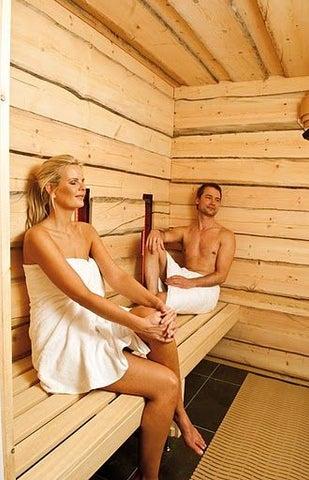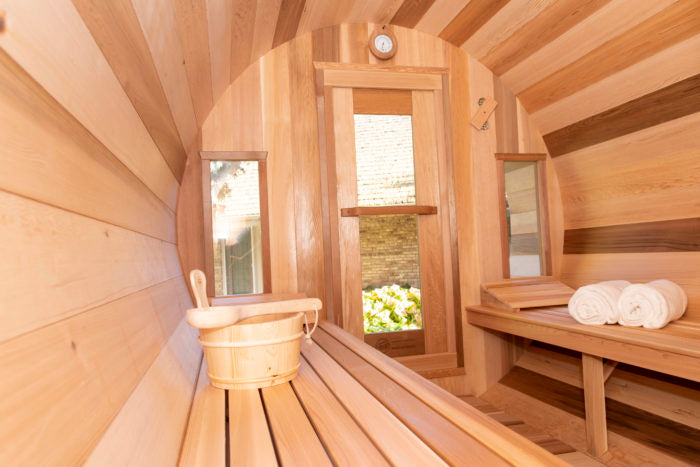The Ultimate Guide To Traditional Sauna
The Ultimate Guide To Traditional Sauna
Blog Article
10 Simple Techniques For Traditional Sauna
Table of ContentsTraditional Sauna for BeginnersThe smart Trick of Traditional Sauna That Nobody is DiscussingWhat Does Traditional Sauna Do?Not known Facts About Traditional Sauna
Many of the weight lost in a sauna is water loss and is re-gained upon rehydrating. Without an uncertainty sauna can be an essential component of a healthy and balanced weight loss program. To look at the differences between conventional and IR saunas, I will separate these right into proven, academic, and produced differences.Thus, the best factor in the saunawhich goes to the ceiling directly above the sauna heateris generally in between 185 and 190 F. Traditional Sauna. Claims that a typical sauna exceeds 200 F is just not true and not suitable for electrical saunas offered in the US. The temperature level for a far-infrared sauna is normally set between 120 and 140 F; nevertheless, unlike the traditional sauna, the objective in and IR space is not to attain a heat
Due to this, the temperature distinction is almost irrelevant, because extreme sweating results in both sauna kinds, yet the approach of heating the body is different. In an IR sauna the bather will certainly really feel warm and will certainly sweat a lot, but at a lot lower temperatures. Thus, if the goal is to invest longer durations of time in the sauna, the IR sauna is a good choice.

The smart Trick of Traditional Sauna That Nobody is Discussing
When the heat is accomplished, the components cycle on and off to maintain the high temperature. Most typical sauna users enjoy pouring water over the rocks to develop heavy steam to raise sauna moisture levels. The advantages of pouring water over the rocks consist of: making the area extra comfy, dampening the nasal flows, and permitting the usage of aromatherapy by mixing essential oils with the water.
In a far-infrared sauna, the warm front permeate the body to effectively heat the body and elevate the body core temperature. To accomplish this enhanced temperature level, Far-infrared emitters create infrared energy which is close to the same wavelength as that which the body normally emitsoften described as the "Important Range" of 7 to 14 microns), so the power is well obtained by the body.
When the energy goes into the body, it causes the body temperature to increase and inevitably leads to sweat. In an infrared sauna it is necessary for the emitters/heaters to remain on nearly frequently. Since there is no mass of rocks to preserve warmth, the sauna will certainly a knockout post cool down if the emitters closed off.
As mentioned over, the sauna bather in an infrared area wishes to position himself in front of operating emitters to obtain maximum take advantage of the warm. The home heating time for the two spaces can be very various, depending upon how the areas are used. For a standard sauna, a bather must permit 30-40 mins for the area to accomplish a wanted temperature and to appropriately pre-heat the rocks.
Traditional Sauna - Questions
A well created sauna will typically attain a temperature of 150-160 F in concerning 30-40 mins. For hotter temperatures, the space may require to warm for a longer period.
To some, 15 mins was "squandered" while the infrared power heated up the wood panels as opposed to heating a body, while others find a pre-heated space to be a lot more comfortable and think an elevated starting temperature is necessary to begin perspiring. The size of advised usage for each and every space is about the very same (10-15 mins per session); nonetheless, because of the reduced air temperatures and the ability to really feel the effects of infrared heat faster than a typical sauna, it is not uncommon for an individual to spend a total of 20-30 mins in an infrared sauna.
Traditional saunas have a tendency to be larger (hence make use of more power) than infrared saunas, image source although traditional saunas are certainly readily available in one and two individual dimensions as well. For a two-person conventional sauna, 5x6 or 5x7 dimension is most prominent. The leading bench can pleasantly seat two or three people and is likewise long sufficient to relax during the sauna session.


The average expense per kWH of electricity in the united state is about $0.11, so a 4.5 kW heating unit will certainly set you back about $.50 to run for one hour, if the heating system runs constantly for one hour. Usually a sauna heater will certainly compete 75% of the very first hour and 50% of succeeding hours on considering that the his comment is here elements cycle once the set temperature level is attained.
Some Known Details About Traditional Sauna
A 2 individual far-infrared room is typically literally smaller than a conventional sauna, frequently concerning 4' x 4' or smaller sized. The IR furnace is typically 1.5-1.7 kW making use of a 120 volt 15 amp plug-in solution. Considering that the space can be made use of earlier than a sauna space, we will certainly assume the area is made use of for to of an hour consisting of warm up time.
There is a seldom reviewed distinction in the social experience in between the 2 areas. While our society has lost some of the social benefit of the traditional sauna experience, it can be extremely socially rewarding. From family time in the sauna, to heart-felt discussions with loved ones, to sauna partiesthe conventional sauna experience can bring about intimate socializing.
The majority of greater end infrared spaces include colored light treatment, audio systems and full-glass fronts.
Report this page